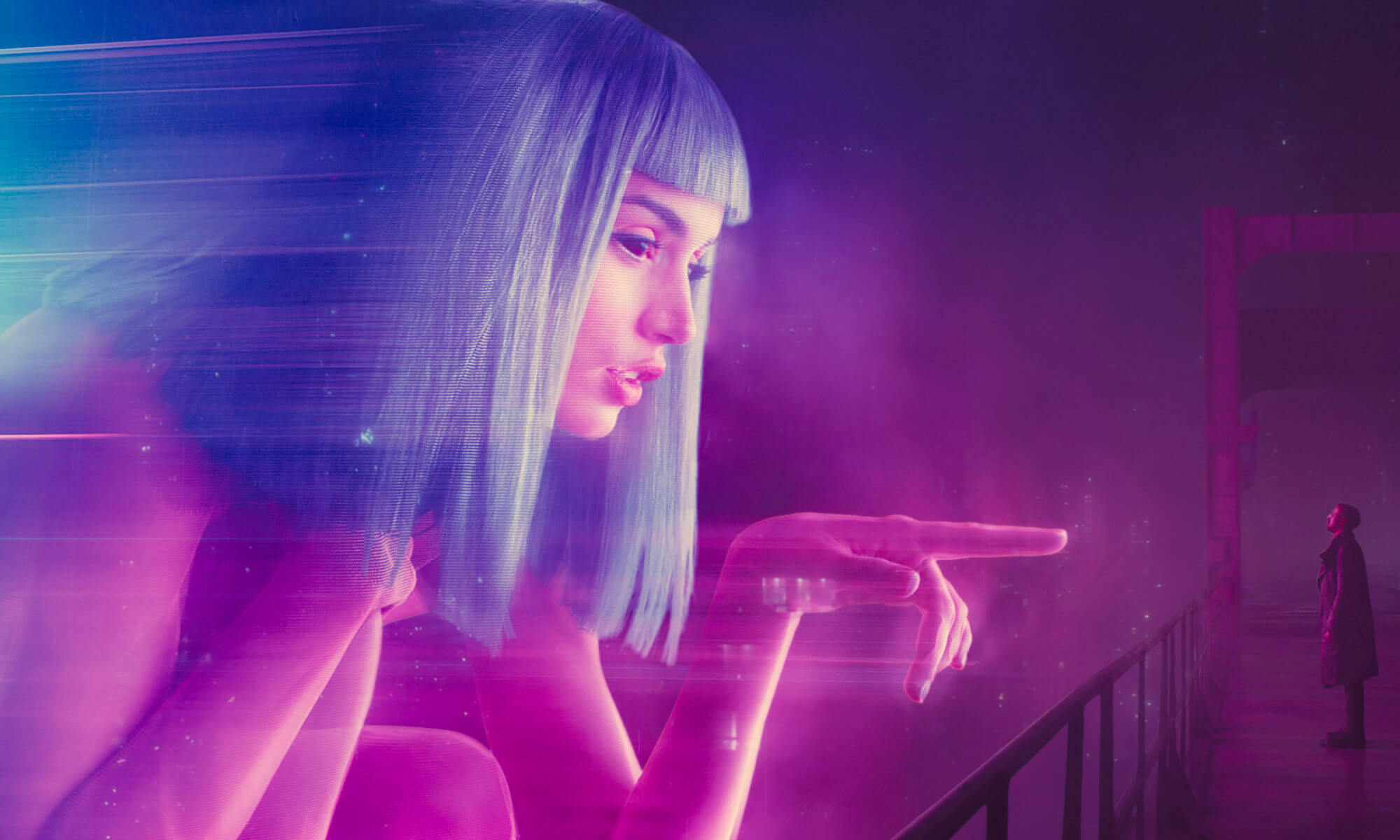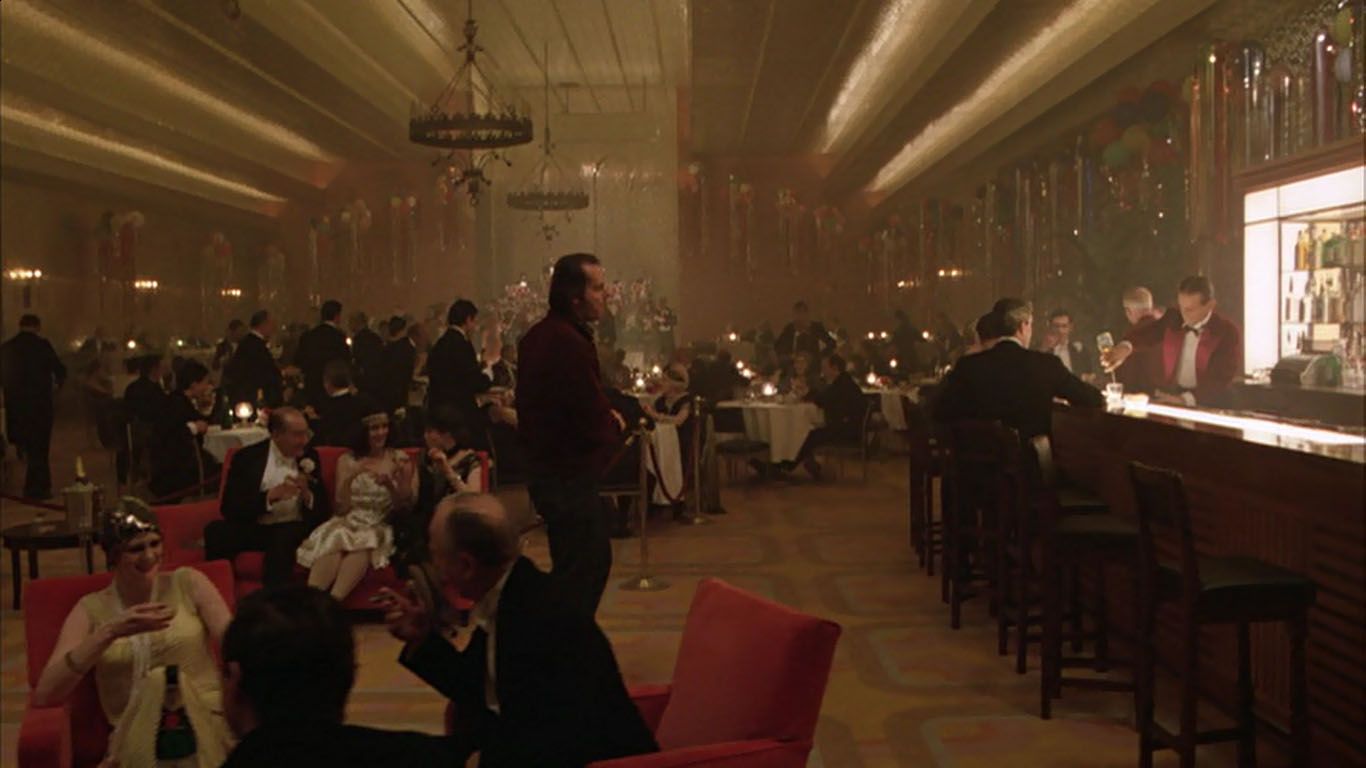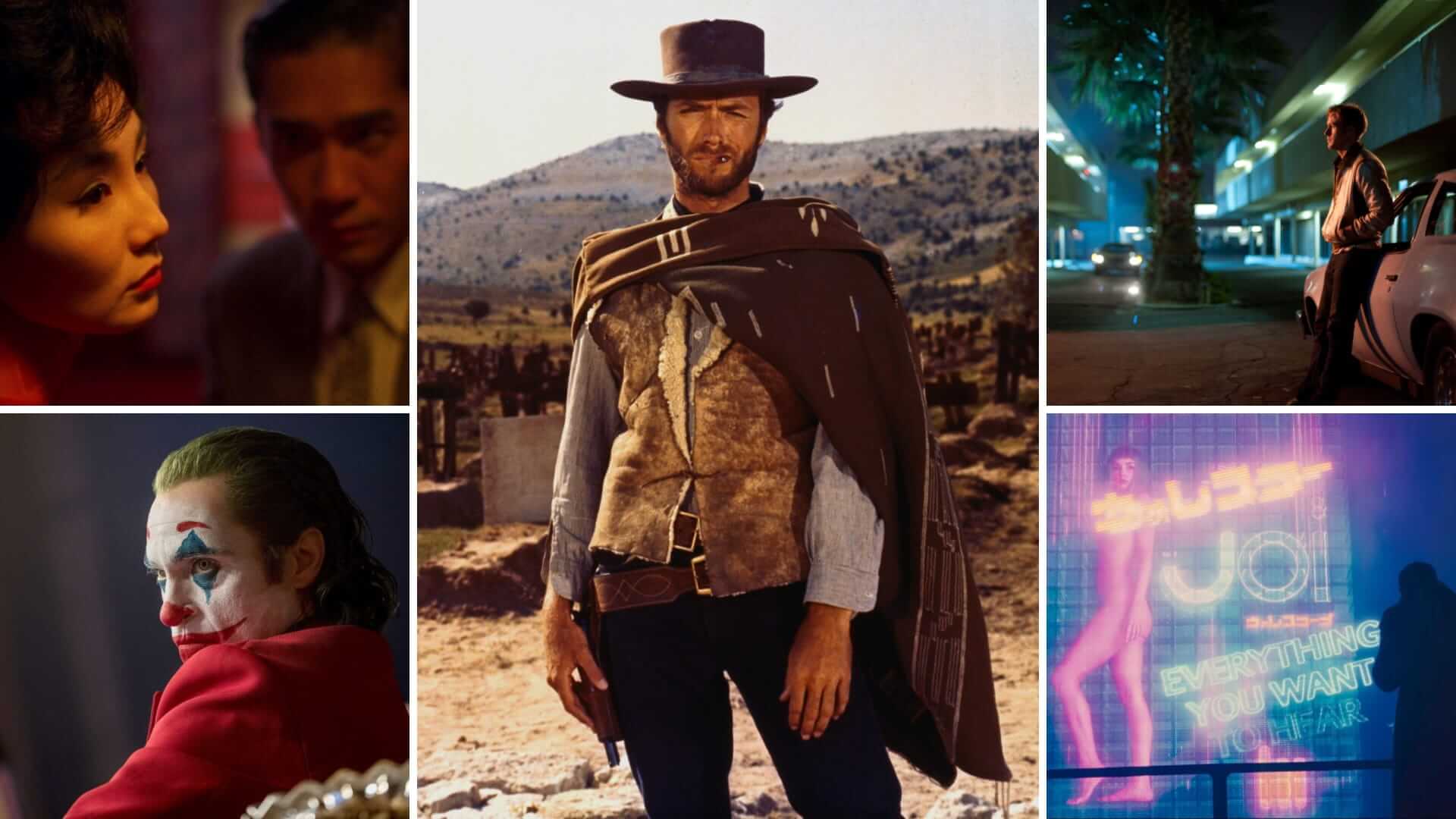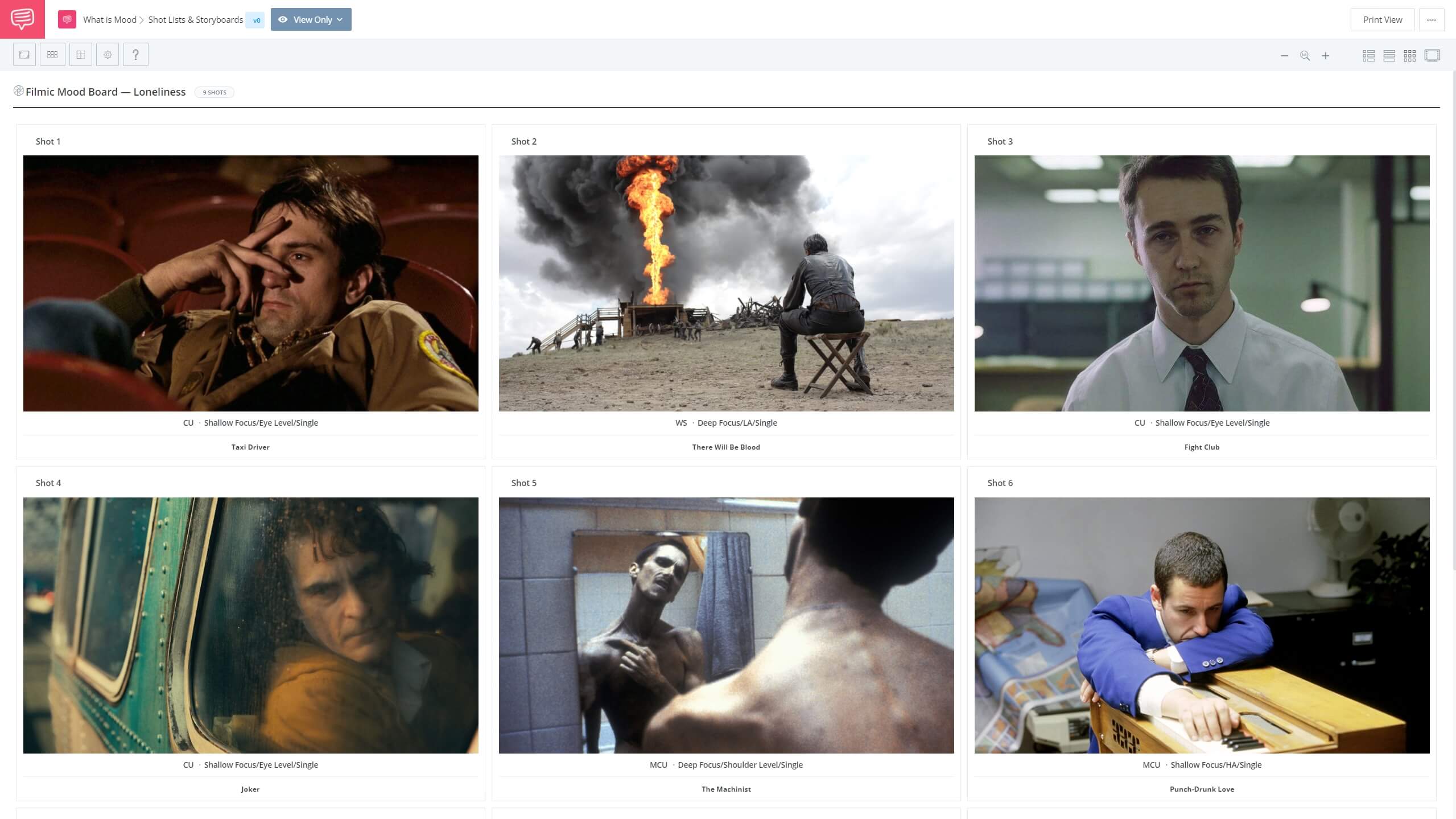What is mood in literature and film? We often use the term “mood” in a generalized sense to describe the overall feel of situations – but is that a misapplication? We’re going to break down everything there is to know about mood; including how mood is different from tone and how mood is applied in film and literature. By the end, you’ll understand what mood is and how to apply it in your own works.
What is Mood in Literary Terms?
First, let’s define mood in literature
It’s tricky to define mood in literature because there are two interpretations of the term. Both interpretations of mood are derived from the same etymology — old English mōd which translates to “feeling.”
“Mood” can refer either to the atmosphere of a story or the emotional state of a character. Mood and emotion are heavily linked, but they aren't the same. In writing, there is a lot of overlap and the best writers (for fiction or film) understand that relationship and use it to tell more cohesive stories.
Now that we’ve broken down some conceptual differences between mood and emotion, let’s outline a formal mood definition.
MOOD DEFINITION LITERATURE
What is mood?
A mood is a feeling that can refer to the emotional state of mind of a person/character or the atmosphere of a story. Mood is omnipresent in stories. In literature, mood is communicated subtly through the use of imagery, conflict, etc.; and explicitly through omniscient narration or dialogue. In film, mood can be communicated similarly – but it can also be communicated through the visuals and soundtrack.
Steps in Creating Mood:
- Response to Stimuli
- Expression of Emotion
- Feeling as a Result
What is the Meaning of Mood?
Breaking down the mood meaning
So far, you can see that what we're talking about is rather abstract, amorphous and subjective. If mood is informed through emotion, and everyone has their own emotions, how do we even begin to execute these concepts?
This next video from screenwriting guru Robert McKee explores the question: what is the difference between mood and emotion?
Mood of a Story • What is the Difference Between Mood and Emotion?
“The mood of any story, whatever it is, is there to make the emotional experience of the story specific.” — Robert McKee.
Think about the etymology of mood again and how everything references back to “feeling.” Mood is an atmospheric feeling; emotion is a personal feeling. McKee argues that in a story, mood is what makes the emotional experience (terror, euphoria, etc.) specific.
Mood Definition Literature
Tone vs mood explained
Tone vs mood — tone and mood are two terms that are often used interchangeably — but they don’t have the same meaning. There’s definitely some conjecture as to the applicable definitions of mood and tone but perhaps it’s helpful to think about this way:
Mood is what you feel from consuming a piece of art.
Tone is what the artist feels about the subject matter of their art.
Can you see how the mood definition and tone definition could lead down a slippery slope? There’s a whole lot of subjectivity in personal feeling and a whole lot of presumption in suggesting how an artist feels about their work.
There are cases where we can appropriately diagnose mood and tone though. Let’s look at an iconic example from George Orwell’s 1984.
What is Mood in Literature? • Crash Course Breaks Down ‘1984’
What’s the mood of 1984? How does it make you feel? I suppose it’s fair to say that 1984 is supposed to make you feel paranoid, fearful and depressed. But is that how Orwell wanted you to feel? Well, yeah pretty much.
In a letter written in 1944 addressing the second World War and the responsibility of artists to show the horrors of totalitarian states, Orwell said “I think, and have thought ever since the war began, in 1936 or thereabouts, that our cause is the better, but we have to keep on making it the better, which involves constant criticism.”
So, let’s diagnose the mood and tone in 1984.
Mood: fear and paranoia.
Tone: indicting totalitarianism.
Now, let’s break down some more mood examples in literature.
Related Posts
Types of Mood in Literature
Mood examples in literature
In literature, conflict and imagery are two essential aspects of building mood. Conflict is when two or more opposing forces work against each other. Imagery is everything that goes into building an image in the mind of a reader.
Perhaps no American author was better at building mood than Edgar Allan Poe. This next video from TED-Ed explores why everyone should read Poe.
What is Mood in Literature? • Why Should You Read Edgar Allan Poe?
Poe is widely credited with creating the first modern detective story with The Murders in the Rue Morgue; which went on to inspire the mood of hardboiled fiction and some film noir. But Poe is perhaps most famous for his use of gothic imagery and the macabre. Many of Poe’s most famous works, including The Murders in the Rue Morgue and The Raven, were defined by their gothic imagery, macabre conflict, and sinister mood.
Many contemporary critics argue that Poe’s best work is The Cask Of Amontillado – a short story about a man named Montresor who kills his rival, Fortunato. This next video from Course Hero explores why The Cask of Amontillado is such a great example of mood.
What is Mood in Literature? • The Cask of Amontillado Analysis
So, why is The Cask of Amontillado one of the greatest mood examples in literature? Well, let’s start with the imagery. Read this excerpt and pay attention to the image it creates.
“We went on, deeper and deeper into the earth. Finally we arrived at a vault in which the air was so old and heavy that our lights almost died. Against three of the walls there were piles of bones higher than our heads. From the fourth wall someone had pulled down all the bones, and they were spread all around us on the ground. In the middle of the wall was an opening into another vault, if I can call it that — a little room about three feet wide, six or seven feet high, and perhaps four feet deep. It was hardly more than a hole in the wall.”
How does this image make you feel? Probably a little grossed out right? Poe was a master of using imagery to evoke mood in the reader.
The second way Poe built his signature mood is through macabre conflict – or conflict that results in death or dismemberment. We see him use macabre conflict in A Cask of Amontillado when Montresor seals Fortunato in the wall – and in The Tell Tale Heart when the narrator kills their roommate and buries him underneath the floorboards.
If you’re planning on writing a novel or short story, consider building a mood like Poe does. You don’t have to focus on dark subject matter – you can try writing something antithetic to his sensibilities.
For example: why not swap out macabre conflict for intimate conflict? Why not build romantic images rather than gothic ones? You never know which strategy will work best for your story until you give it a go.
Related Posts
Mood of a Story in Film Explained
Mood examples in film
Cinema offers a breadth of opportunities to build mood — through lighting techniques, production design, camera movement, diegetic sound and non-diegetic sound. One film that does an absolutely phenomenal job of building mood strictly through filmmaking tactics is The Artist.
Watch this next clip and think about how director Michel Hazanavicius builds the film-world with emotion.
The Mood Meaning in The Artist
How does this scene make you feel? Happy? Sad? Romantic? Why do you feel this way? Is it the swelling non-diegetic music? Is it the actors’ performances? Or is it the unique camera framing of the scene? Maybe it’s all of these things – and perhaps that’s the best explanation of what mood in cinema is.
Now let’s take a look at another clip from The Artist that represents a diametrically opposite mood.
The Mood Meaning in The Artist, Part II
How does the alternative use of sound change the mood of this scene? Well, I’d say that it makes us feel like something is wrong – it puts us into the mood of the main character, George, and incites a sense of paranoia.
Another way filmmakers can visually communicate mood is through the use of color theory; which can be used cinematographically with lighting – like it is in Blade Runner: 2049.

What is Mood in Literature and Visual Media? • Mood Examples in Blade Runner: 2049
How does the color in this image make you feel? Confused? Enticed? To me, the vibrant pinks and blues instill a sense of artificiality. And the fact that the man is left in the shadows confirms a feeling of loneliness and powerlessness.
There are many ways to generate this particular mood — i.e., there's no one guaranteed way to do it. When filmmakers are looking to strike a particular mood in their work, they might create a mood board or a lookbook to gather their inspiration. We imported a series of stills into StudioBinder’s storyboard creator software to generate a “lonely” themed mood board.
Follow the image link to explore the entire collection, including shots from Drive and Into the Wild, and download a PDF for future reference.
Filmic Mood Board, Made With StudioBinder’s Storyboard Creator
Notice how each frame features a single character? That’s because it’s a natural way to build a “lonely” mood. You may also want to consider the role that gazes and reflections play when it comes to mood.
If you want to explore other works of Roger Deakins, check out our article on how to use lighting like Roger Deakins.
Let’s look at another image – this time from Stanley Kubrick’s The Shining.
Mood Definition Literature and Film • ‘The Shining’ Creates Atmosphere & Mood
What’s the mood here? Does it look like a celebration? How do we know? Well, the characters are all dressed up; and some are smiling. The red chairs in the foreground draw our attention to a lively group in front of the camera – then to the bartender in back. In the middle, Jack seems solemn – which makes the mood a confusing mix of life and loathing.
If you want to learn more about Kubrick’s film-worlds, check out our article on how to use color in mise en scene like Kubrick.
When planning out a scene in your own film, think about how different filmmakers use sound, visuals and color to communicate atmosphere and state of mind. Consider the audience and the experience you want them to have.
Related Posts
UP NEXT
Create your own mood board
We briefly touched on the difference between tone vs mood, but there’s a lot more to it than what we went over here. Now that you have a better understanding of how important mood is in the overall storytelling experience, why not start by creating your own mood board? You'll be surprised at how quickly inspiration comes when you put one together.
Up Next: Create a mood board now →
Showcase your vision with elegant shot lists and storyboards.
Create robust and customizable shot lists. Upload images to make storyboards and slideshows.

